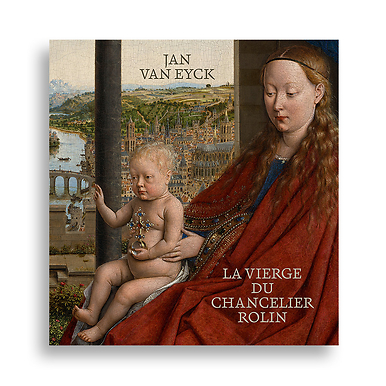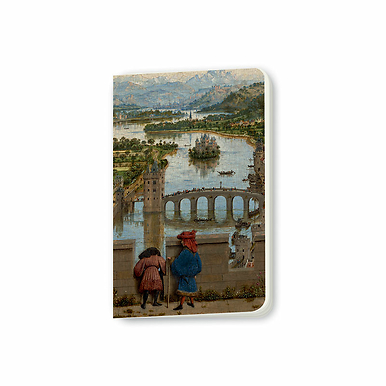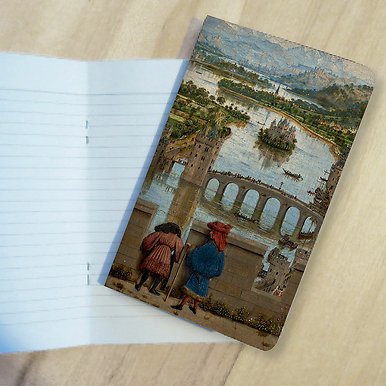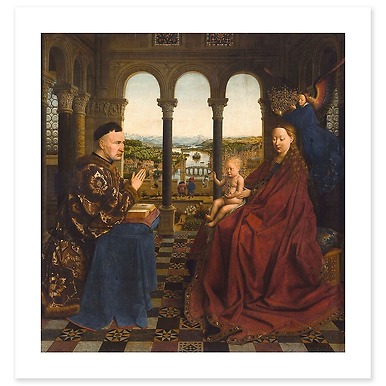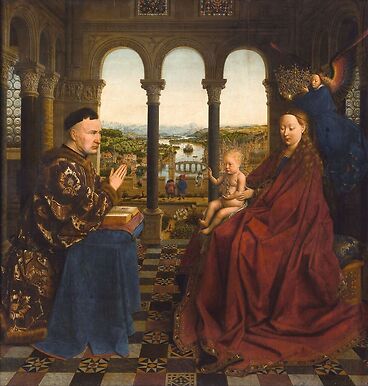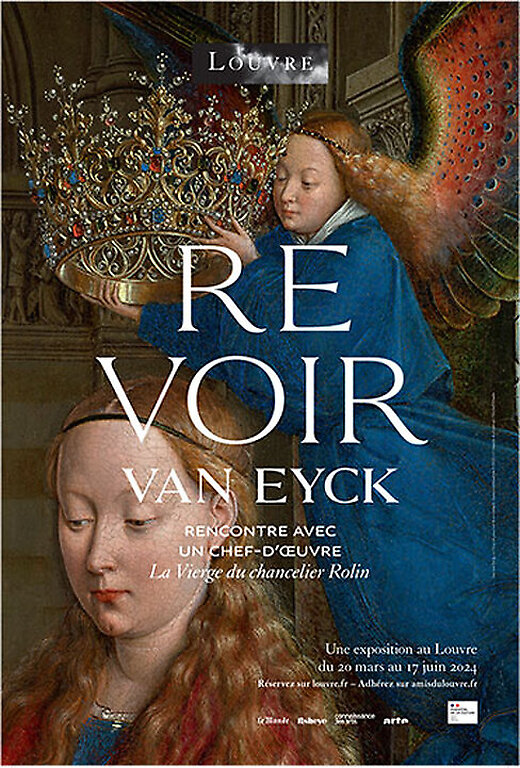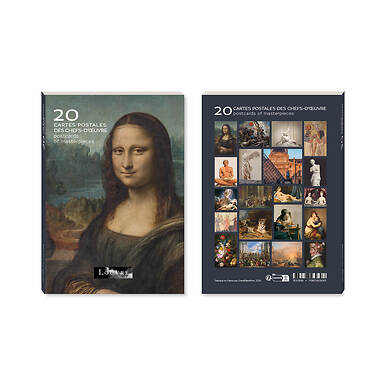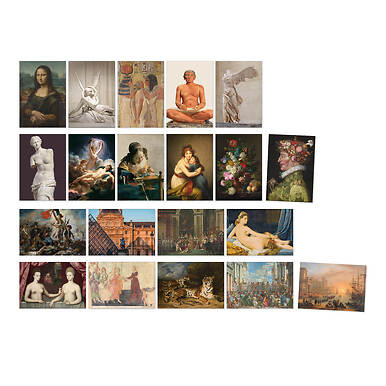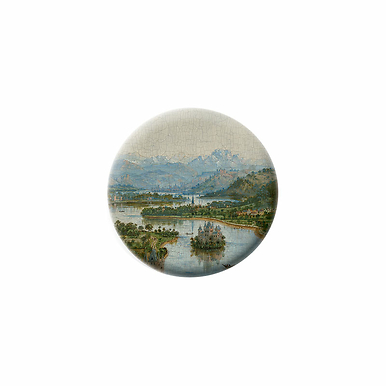Jan van Eyck
v. 1390-1441Our Selection
Great master of painting in the 15th century
It was Jan Van Eyck, great master of painting in the 15th century, who launched the Flemish Renaissance, abandoning religious allegory in favour of new pictorial subjects such as landscape or genre painting. With almost nothing known about the painter's origins and training, nor about his family, Jan Van Eyck's biography thus begins when he becomes a painter at the court of John III of Bavaria. Between private commissions and works for European nobility (including the Duke of Burgundy), it was in the 1430s that the painter produced his most beautiful canvases: The Adoration of the Mystic Lamb (1432), Arnolfini Couple (1434), or the Madonna of Chancellor Rolin (around 1435), held in the Louvre since 1805. Jan Van Eyck was notably one of the first painters to sign his works.
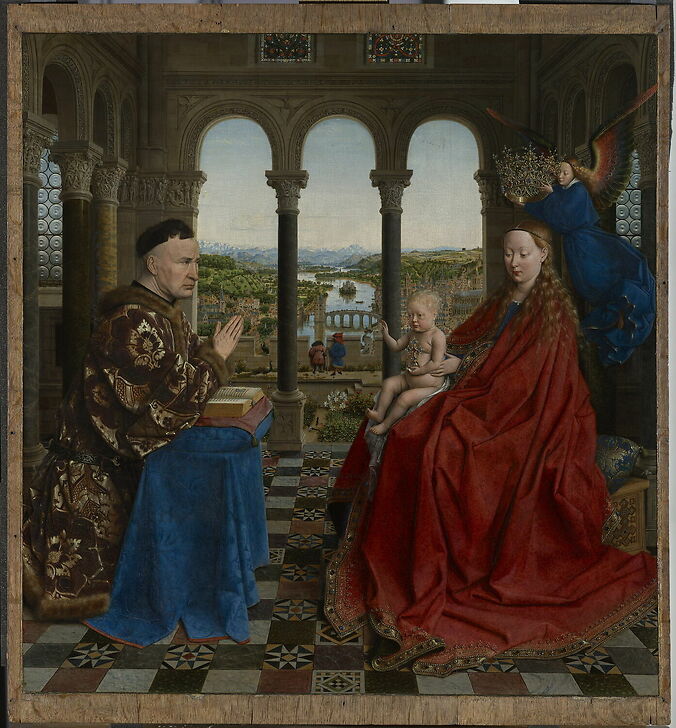
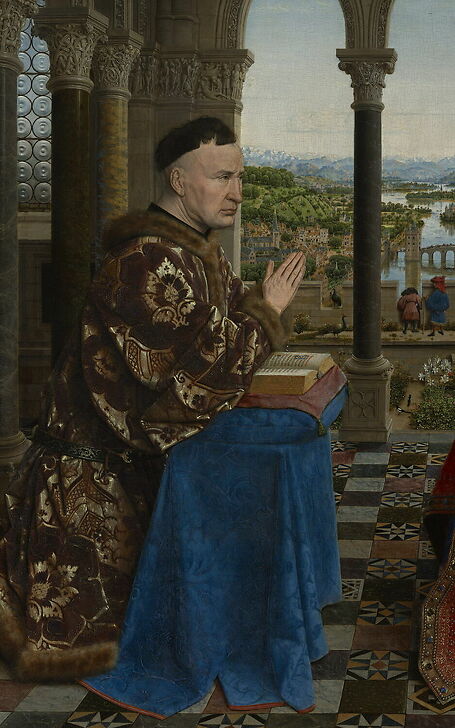
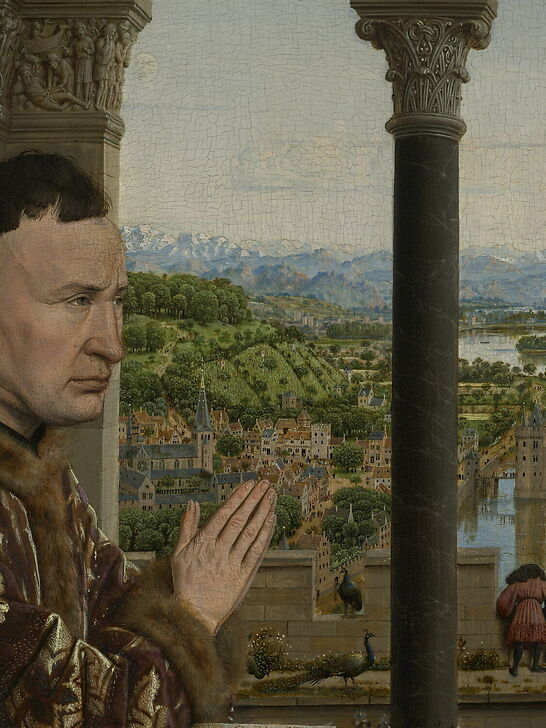
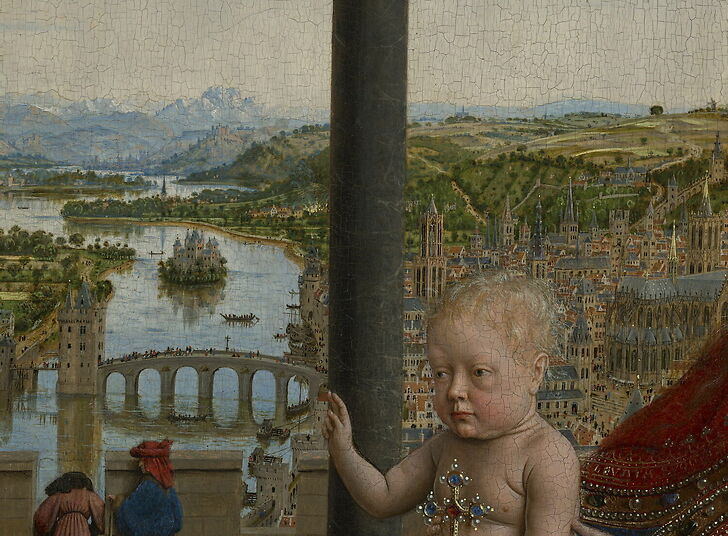
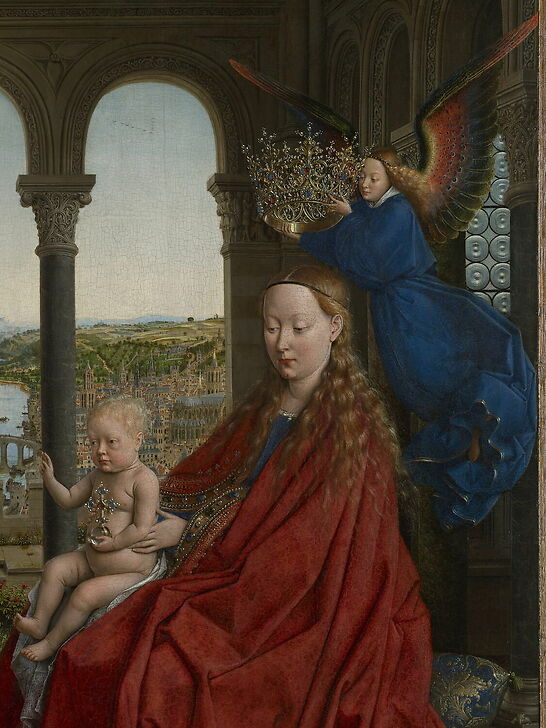
Madonna of Chancellor Rolin
Entering the Musée du Louvre in 1800, this work by the Flemish Primitive painter Jan Van Eyck had remained untouched until its restoration between 2021 and 2024. An opportunity for the general public to (re)discover a painting freed from the layers of oxidised varnish that darkened the vibrant colours of this religious composition. Created for Nicolas Rollin, then Chancellor of the Duke of Burgundy, this ex-voto was painted around 1435 with oil on wood.
Taking up one of the many themes in the iconography of Christian painting, The Virgin of Chancellor Rollin brings together two divine figures - the Virgin and the Child - as well as the patron of the work, depicted here on the left. This "Sacred Conversation" - as this type of work was known at the time - is obviously rich in symbolism, embodied by the various animals (magpie, peacock, rabbit), symbols (eight-pointed stars) and architectural elements (bridge, columns).
Did you know?
Jan Van Eyck is one of the pioneers of oil painting, which he popularised and perfected.

